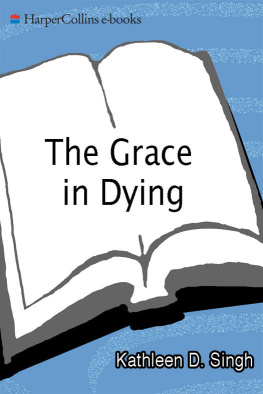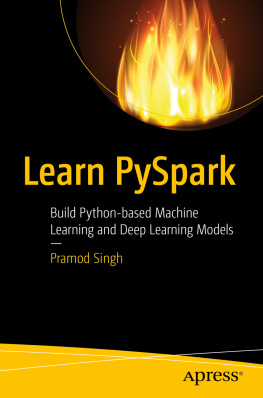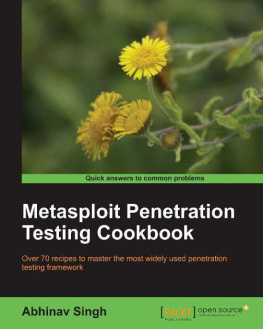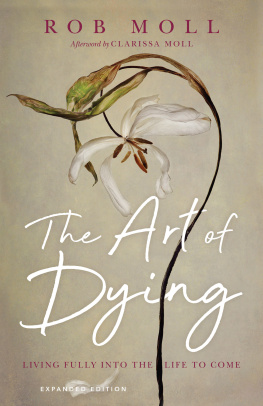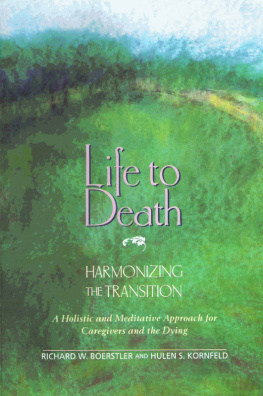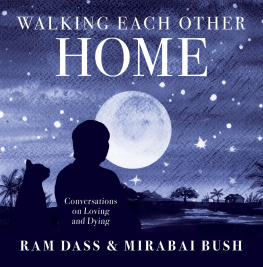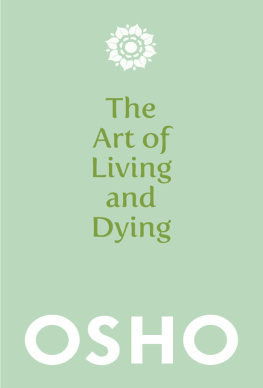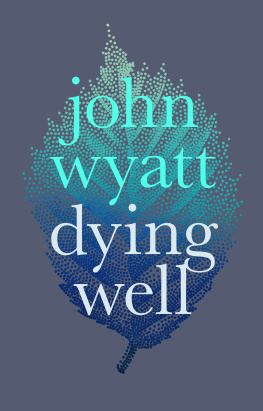
CONTENTS









I have labored with devotion over this work, attempting to shed light on the intimate relationship, the essential unity, of dying, contemplative practice, and spiritual growth. I believe that this book offers a significant view into the transformations of dying; a view that has not, until now, been clearly articulated in contemporary terms. This was one of my goals in writingto share, in the vocabulary of a growing Western wisdom, observations of the subtle dimensions and profound transformations we encounter as we near death. It was my intention, in writing, to make this view accessible to as many people as possible, whether or not they had ever heard of psychospiritual transformation. The insights of transpersonal psychology underpin everything offered herein, and I am deeply indebted to the work of Ken Wilber and Michael Washburn. Their insights form the foundational structure of this work. I have given my best effort to maintaining accuracy while working toward accessibility.
People who are unfamiliar with transpersonal psychologymost readers, perhapsmay find some early chapters of the book somewhat challenging. These chapters describe the steps by which we human beings unfold to the point of a well-developed personal self and the steps by which we unfold beyond that personal self into dimensions of Spirit. I have tried to make these chapters as user-friendly as possible with a simple chart, some appendices, and a glossary. The reader may choose to make the early effort and will, I hope, find that effort rewarded later in the book with clarity and insight into what it is that happens to us psychologically and spiritually as we die. If you would prefer to focus first on the discussion of the transformations of dying, begin with the first chapter, Living, Dying, and Transformation and then proceed to The Psychospiritual Stages of Dying, and on through the rest of the book. Then come back to the early chapters for an explanation of the dynamics of the process of transformation.
Let me make a plea here. Many times in my life I have missed insights of value because the person sharing his or her experience did not use the words and catch-phrases I, at that time, considered to be the essential calling cards of wisdom. I missed opportunities because I was too lazy or impatient or dismissive to translate. Please do not make my mistakes. The language in this book is language that attempts respectfully and gratefully to consolidate the wisdom of many traditions. If there is too much Jesus for you or not enough Jesus, if there is too much Buddha or not enough Buddha; if I have missed the intricacies of the Kabbalah or failed to quote the Koran, please.... translate into terms that are meaningful to you.
I have many people to thank for their help in this task. Always first, I thank my deepest spiritual companion, the late Sant Ajaib Singh. I thank the front-line people with whom I have worked at a hospice in Florida, compassionate people of the finest quality. With gratitude and respect, I thank hundreds of hospice patients, dying people who shared with me their experience of the grace in dying.
Ken Wilber and Michael Washburn have consistently inspired me in their works. Along with Larry Dossey andespeciallyKenneth Ring, they were encouraging and supportive of my work. I wish I could express all that their feedback and good wishes meant to me. I thank my agent, Ned Leavitt, and my editor, John Loudon, who were invariably helpful in their feedback. I am also indebted to the work of Sogyal Rinpoche and Stephen Levine, both of whom also work with the dying and both of whose observations corroborate my own. In particular, I must say that I never realized until I began formulating my thoughts for this book how thoroughly influenced in my heart and in my mind I have been for years by the work of Stephen Levine.
I would like, also, to thank members of my family, the Dowling family, for their everpresent love and confidence: my parents, Thomas and Marion; and my brothers, Sherry and Ted. I am grateful, also and always, to my beloved children: Colin, Megan, Valley, and Bethany.
My brother, Michael Dowling, has my unending gratitude. The constant and loving gifts of his generous attention, his formidable intelligence, and his deep integrity have made this book, as well as my life, far better than either might have been without him.
Any measure of good that comes from this book is offered in honor of my brother, Robert Burke Dowling. He transformed suffering into joy.
This is not a book for a time of imminent crisis. This book was not written to be read if death is very neara few hours or a few days or a week away.
If you are the one who is facing death this soon, put the book down. And know that you are safe. If your loved one is facing death this soon, put the book down. And know that your loved one will be safe.
Dying is safe. You are safe. Your loved one is safe. That is the message of all of the words here. Know that you are safe. All these words are just to tell your mind that you are safe.
If you are dying, your mind will come to know this soon. So, go and rest or go and pray or go and meditate, so that when you begin to enter the realms of the sacred you will resonate with those realms gently.
If it is your loved one who is dying, go and be with and cherish and comfort your loved one. Speak softly and hold lightly and let him or her know that dying is safe. Pray or sing or meditate with your loved one; so that as he or she enters realms beyond this one of bodies and words, your loved one is fully opened to Spirit, and you will also be attuned to the mystery where you and your loved one are forever connected.
If you have some more time, this book can, I hope, speak to you about dying. It can, I hope, speak to you about what dying has to do with living and what living has to do with dying. It reveals that there are levels of awareness, of being, of Spirit, that transcend the personal consciousness we tend to think of as our self. It reveals that dying, remarkably, is a process of natural enlightenment, of finally coming home to our true self. It charts how we gradually open to deeper levels of our being, how we remerge with the Ground of Being from which we once emerged.
This book is based on observations and experiences gained after hundreds of hours at the bedsides of those who were dying. It is based on the words the dying people in those beds spoke to me. These observations and experiences and words reveal an apparently universal process of transformation inherent in death itself: the grace in dying.
This book does well with some time to contemplate its implications. The natural processes leading to dimensions of Spirit are our deathright. They are our birthright, as well. This book was written to be read as awareness grows of a coming end to our physical existence as well as in the midst of life.
Next page
